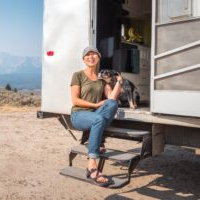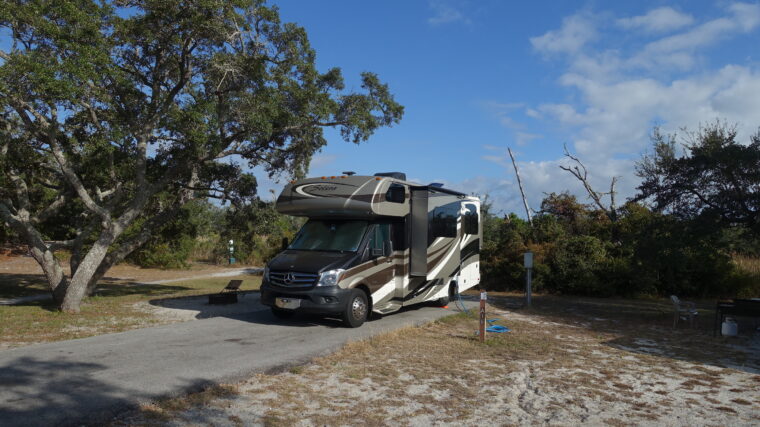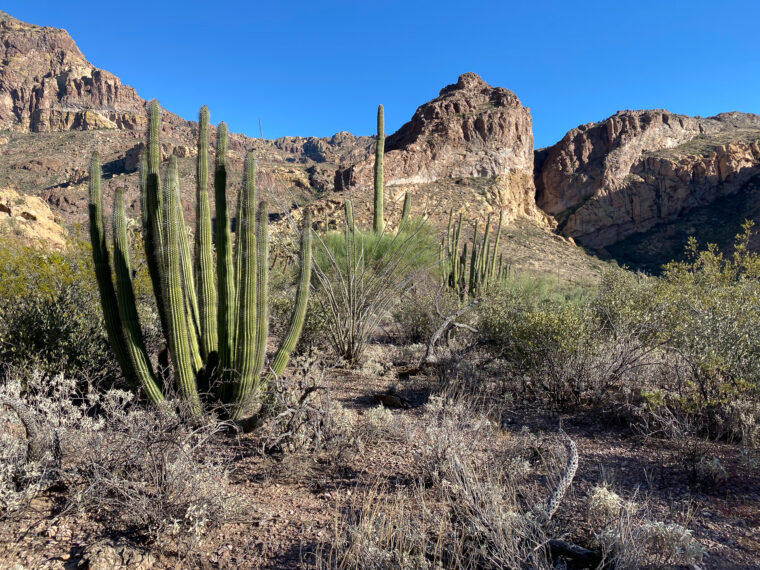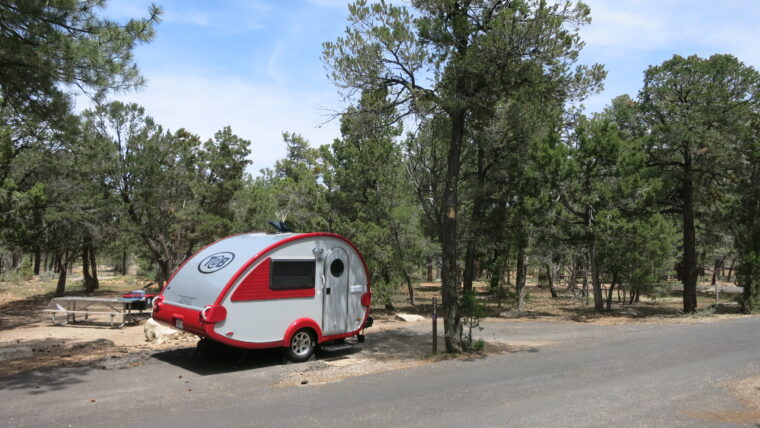As more national and state park campgrounds transition to reservation-based systems, it may seem like first-come, first-served camping is a thing of the past. But there are still plenty of campgrounds that offer walk-up sites, and finding them isn’t as hard as it seems. Each national park’s website provides detailed information about the park’s campgrounds, including reservation requirements, amenities offered, RVs allowed, and operating season. America’s State Parks makes it convenient to find individual state park websites along with reservation requirements.
First-Come, First-Served Camping for RVs
Most national and state park campgrounds welcome RVs, but there are typically more sites available for tents. While big rigs have fewer options, it’s not impossible to find sites for them—but be prepared to dry camp. Tent campers have it easier, not only because they have more options to choose from, but because campgrounds usually allow six people, two to three tents, and two vehicles at each site.
First-Come, First-Served Camping at National Parks
As national parks receive more visitors every year, many campgrounds now require reservations. Iconic parks like Zion, Yosemite, and Acadia no longer offer walk-up sites and reservations are required during the entire camping season.
But there are still several national parks that offer first-come, first-served sites.

Great Smoky Mountains National Park
Cades Cove and Smokemont campgrounds are open year-round and only require reservations May through October. Available walk-up sites are listed on the “Late Arrival List” posted at the campgrounds. Plus, RVs are allowed.
Yellowstone National Park
Mammoth Campground only requires reservations between April and October and is open year-round with RVs welcome.
Grand Canyon National Park
Mather Campground sets aside 10 sites as first come, first served March through November. But reservations aren’t needed the rest of the year, and RVs are welcome. Trailer Village RV Park features both reservable and first-come, first-served campsites year-round.
Glacier National Park
Apgar Campground requires reservations May through October, but is first come, first served the rest of the year. All other campgrounds are first come, first served only. RVs and trailers are only recommended at Rising Sun, Two Medicine, and Avalanche.
Shenandoah National Park
Matthew Arms, Loft Mountain, and Lewis Mountain campgrounds are first come, first served, open March through October, and welcome RVs. Big Meadows Campground has walk-up sites in early spring. Starting in May, sites become reservable and first come, first served.
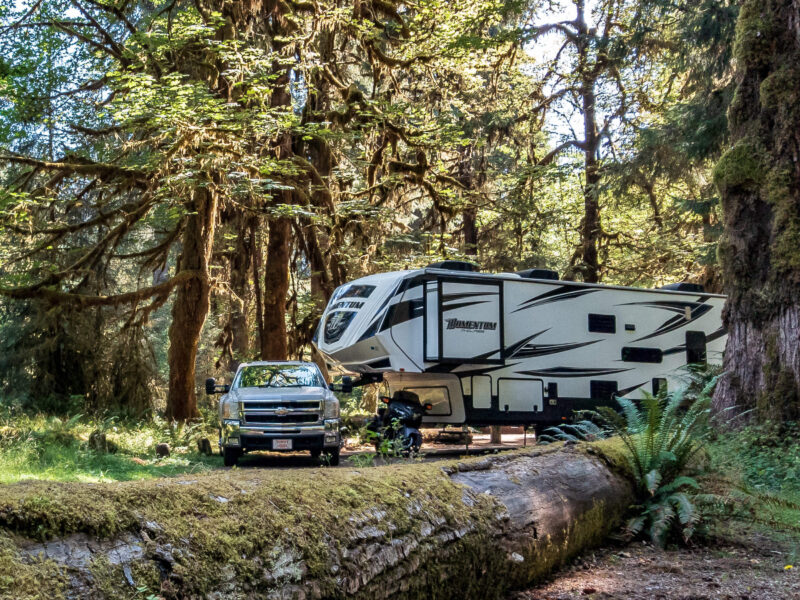
Olympic National Park
Hoh, Kalaloch, Mora, and Fairholme campgrounds accept reservations only from May through September and the first three are open year-round. The remainder of the park’s campgrounds are first come, first served only. Several are open year-round and a handful of them are tent-only.
First-Come, First-Served Camping at State Parks
State parks have also embraced the campground reservation system, but first-come, first-served sites are still available. Lots of state parks that require reservations offer their “no-show” sites to walk-up campers.
Here are some states that offer walk-up sites:
Nevada
All Nevada state park campgrounds are first come, first served year-round.
Alaska
Most Alaska state park campgrounds only feature first-come, first-served sites. See the full list here.
Oregon
Oregon State Parks lists all its first-come, first-served campgrounds. Unreserved sites are available without a reservation for 1 night only; campers need to make reservations online if they want to stay longer.
Iowa
Although 75 percent of Iowa state park’s campsites can be reserved up to 3 months in advance, 25 percent of the remaining sites are available as first come, first served.
New Mexico
New Mexico state park campgrounds are a combination of reservation and first come, first served.
Wyoming
The 2022 reservation season for Wyoming state park campgrounds is May 1 through September 30. All campsites are first come, first served outside of that window.

First-Come, First-Served Camping Tips
Here are some tips on how to score a walk-up site.
Show Up Early
Arrive early in the day to scout, because campers may leave before check-out time. You’ll likely have better luck on weekdays than during the weekend.
Visit or Call Campgrounds
Some campgrounds have a formal process of reassigning no-show or canceled sites while others require you to check these out on your own. No-show and canceled sites at campgrounds that use Reserve America don’t automatically get put back in the queue, so a visit or call is needed.
Check Social Media
Some national and state park campgrounds will announce their capacity status on their social media pages.
Bring Cash
A majority of first-come, first-served campgrounds use self-registration and only accept cash.
Camp During Off-Season
It’s very common for campgrounds to require reservations only during peak season and offer first-come, first-served sites the rest of the year.
Download the Reserve America App
If you’re at a campground that uses Reserve America for reservations and come across an unreserved site, you still have to go to the website to book the site.
Have a Backup Plan
This is a must. Most national parks are surrounded by national forests, which have established campgrounds and boondocking options to choose from. Lesser-known parks and campgrounds with fewer amenities are also good backup choices.
With more than 6,700 state parks and 63 national parks in the U.S., there’s no shortage of camping options—sometimes you just need good timing and a little bit of luck.

